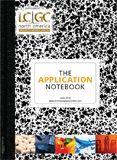The Analysis of 1,4-Dioxane for EPA Method 522 and UCMR 3
The Application Notebook
This application note will demonstrate the extraction of 1,4-dioxane from an aqueous matrix using option 1 of EPA Method 522 for 500 mL initial volume sample. It will make use of the SmartPrep Cartridge Extraction system to produce a valid initial demonstration of precision (IDP) and initial demonstration of accuracy (IDA).
This application note will demonstrate the extraction of 1,4-dioxane from an aqueous matrix using option 1 of EPA Method 522 for 500 mL initial volume sample. It will make use of the SmartPrep Cartridge Extraction system to produce a valid initial demonstration of precision (IDP) and initial demonstration of accuracy (IDA).
Instrumentation
- Horizon Technology - SmartPrep® Automated Cartridge Extractor - 6 mL Cartridge Configuration - 20 mL Collection Vials
- Restek - ResPrep 6 mL, 2 g Coconut Charcoal Cartridges- Rxi® -5Sil MS; 30 m × 0.25 mm × 0.25 µm
- Agilent Technologies - 6890N GC- 5975C MS – Operated in SIM mode
Method Summary
1. Prepare 500 mL of deionized water using 0.5 g of sodium bisulfate to lower the pH to approximately 2.
2. Add 2.5 µL of a 2000 µg/mL surrogate solution containing 1,4-dioxane-d8 and 7.5 µL of a 200 µg/mL spiking solution containing 1,4-dioxane (for blank samples, add only surrogate solution).
3. Attach Sip Tube number 1 to the sample container.
4. Place a 20 mL VOA vial in position 1 of the tray.
5. Place a 6 mL, 2 g Coconut Charcoal cartridge on position 1 of the carousel.
6. Program and run the EPA 522 method using an N2P1 pressure of 5 psi and an N2P2 pressure of 10 psi.
7. Bring the final volume of the extract to 10 mL.
8. Add internal surrogate (tetrahydrofuran-d8 ) to the full 10 mL extract and run on a GC–MS.
Results
Once a calibration curve was generated on the GC–MS, the extraction process was programmed into the SmartPrep system as it appears in Method 522. Each extract took approximately 1.5 h to complete on the SmartPrep. During this time, the SmartPrep delivered all reagents, gases, and sample automatically allowing the user to streamline the preparatory process by performing the extractions overnight.
To obtain a valid IDP and IDA study, four to seven extracts must be prepared near the midrange of the calibration curve. It should be noted that the same extracts may be used for both quality tests. The relative standard deviation (RSD) must be less than 20% and the average recovery must fall within ± 20%. The studies performed for this application note had the surrogate and internal standards spiked at 10 µg/L while the target analyte was spiked at 3 µg/L. This corresponds to a midrange concentration of the calibration curve that was run on the GC–MS. The data obtained for this study is given in Table I. With the recovery of both the surrogate and target analyte being 99% and 98% respectively, and the RSD being less than 10%, the IDP and IDA studies pass Method 522 criteria.

Table I: Initial demonstration of precision and accuracy for 1,4-dioxane
Conclusions
The SmartPrep Cartridge Extractor demonstrated its ability to obtain a valid IDP and IDA study with excellent precision and accuracy for EPA method 522. In addition to this, the SmartPrep Cartridge Extractor has the ability to extract up to 12 samples automatically while the user is otherwise occupied. The SmartPrep's features combine together to streamline the sample preparation process and allow for it to keep up with the rigorous demands of today's emerging methodologies.
Horizon Technology, Inc.
45 Northwestern Drive, Salem, NH 03079
Tel. (603) 893-3663, fax: (603) 893-4994
Website: www.horizontechinc.com

Separation of Ultra-Short and Long Chain PFAS Compounds Using a Positive Charge Surface Column
December 11th 2024A separation of ultra-short and long chain PFAS (C1-C18) is performed on a HALO®PCS Phenyl-Hexyl column along with a HALO®PFAS Delay column which demonstrates excellent retention for both hydrophilic and hydrophobic analytes.

.png&w=3840&q=75)

.png&w=3840&q=75)



.png&w=3840&q=75)



.png&w=3840&q=75)














